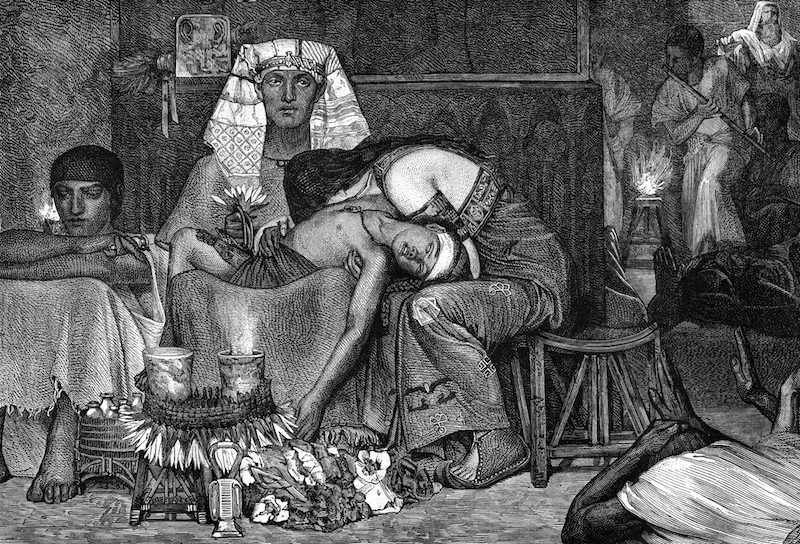
© Shutterstock
The PlaguesEvery spring, Jewish people the world over celebrate Passover, a holiday that recounts the Exodus, when, according to the Torah (the Old Testament of the Bible), the Jews left Egypt for Israel.
However, before Moses could lead the 40-year journey through the desert, he needed the Pharaoh's permission to free the Jews, who were slaves in the land of Egypt, according to the Torah. But the Pharaoh had a hard heart, prompting the Lord to send down 10 plagues until the Pharaoh changed his mind, the Torah reports.
Could any of these plagues have occurred through natural phenomena? Live Science looks at possible scientific explanations behind each of the 10 plagues.
Blood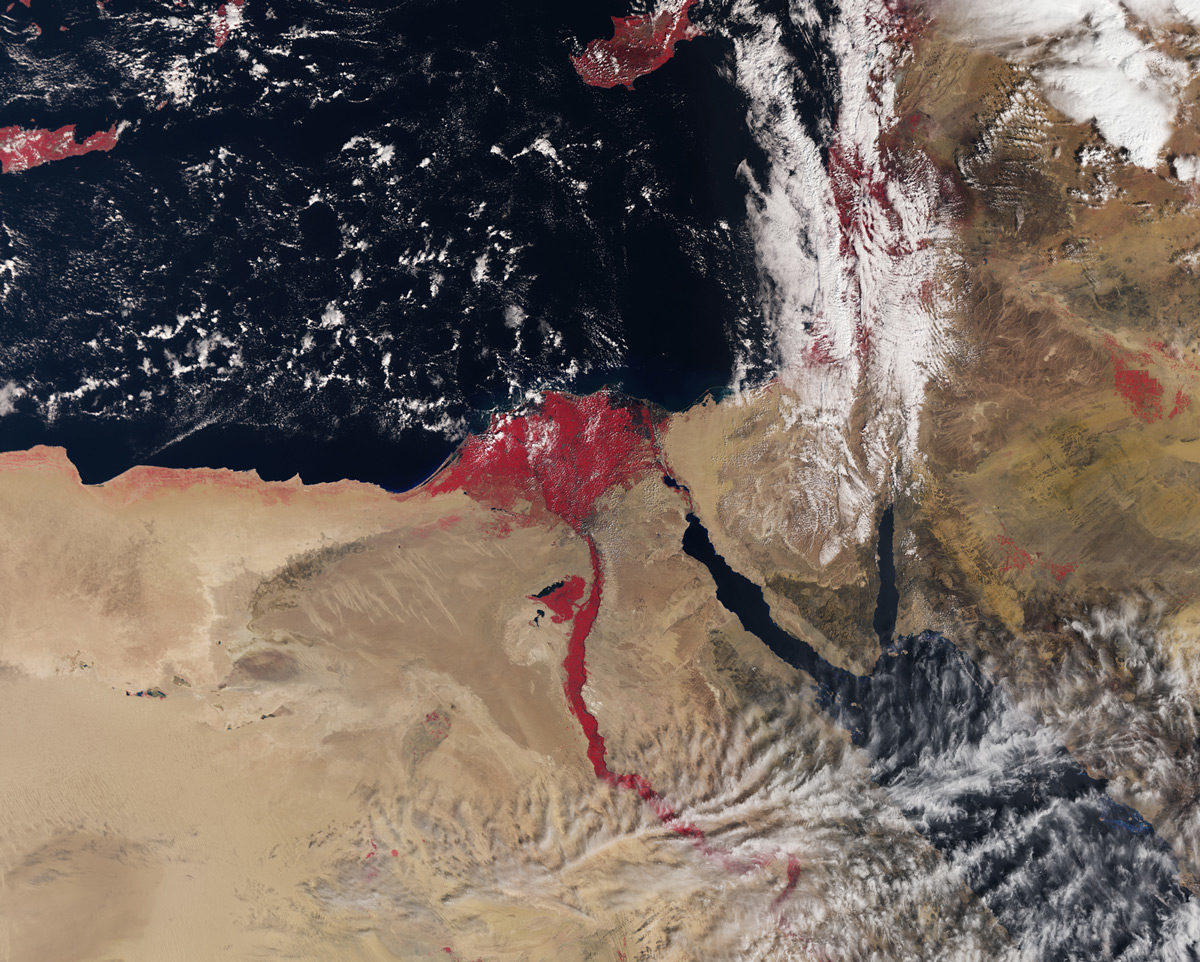
© ESA/Getty
To unleash the first plague upon the Egyptians, Moses struck the river Nile with his staff, turning its waters to blood. At the same time, his brother Aaron performed an identical transformation in the canals, tributaries, ponds and pools throughout Egypt.
After the water turned to blood, "thefish in the Nile died, and the Nile stank, so that the Egyptians could not drink water," according to the Bible, Exodus chapter 7, verse 21,
English Standard version.
The sudden appearance of red-hued waters in the Nile could have been caused by a red algae bloom, which appears when certain conditions enable a type of microscopic algae to reproduce in such great numbers that the waters they live in appear to be stained a bloody red.
This phenomenon is known as "
red tide" when it happens in oceans, but red algae are also well-represented in freshwater ecosystems. And these algae blooms can certainly be harmful to wildlife, as the algae contain a toxin that can accumulate in shellfish and poison the animals that feed on them. Fumes from densely-concentrated algae blooms can also disperse toxins in the air, causing breathing problems in people that live nearby.
Frogs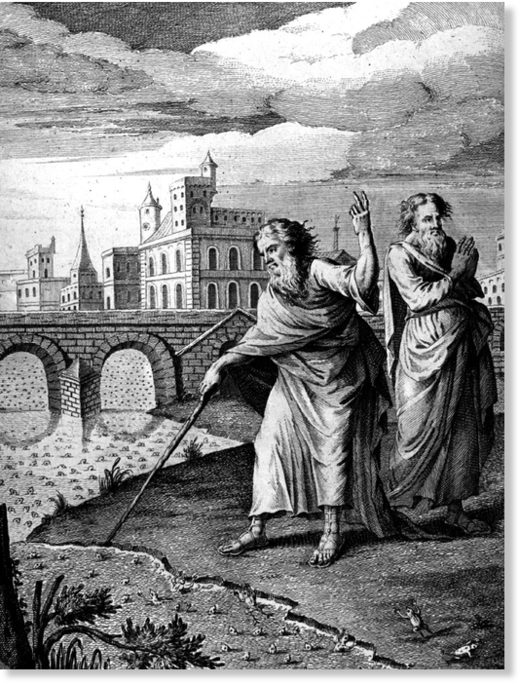
© Hulton Archive/Getty
What do you do next, after turning a nation's water supply into blood? If you're following Moses' playbook, you inundate them with frogs.
For the second plague, Moses allegedly conjured vast quantities of frogs that swarmed into people's homes — even finding their way into the Egyptians' beds, ovens and cookware.
As it happens, the phenomenon of "
raining frogs" has been reported multiple times throughout history and in a range of locations around the world. A report published July 12, 1873 in Scientific American described "a shower of frogs which darkened the air and covered the ground for a long distance," following a recent rainstorm. The account was one of dozens of similar anecdotes collected in
"The Book of the Damned" (1919), though its somewhat skeptical author suggested that the frogs may have simply dropped from trees.
And in May 2010 in Greece, thousands of frogs emerged from a lake in the northern part of the country, likely in search of food, and disrupted traffic for days, CBS News
reported.
Lice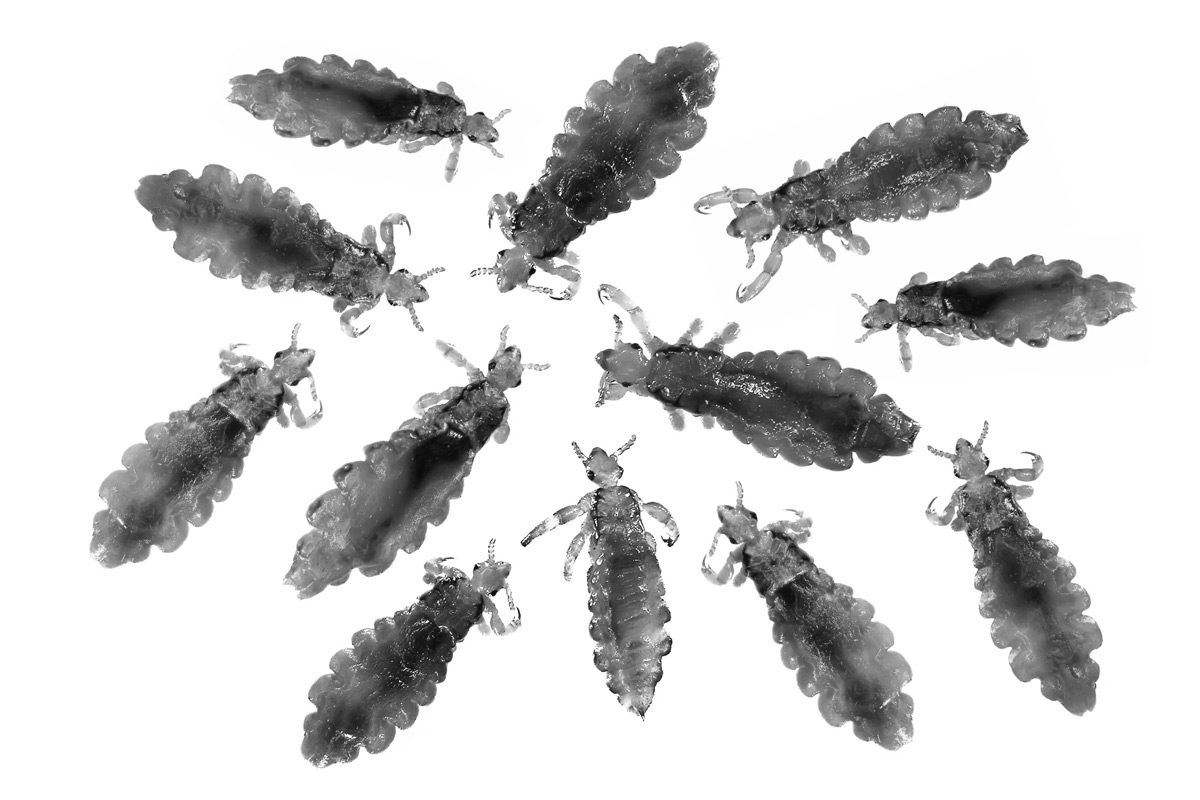
© Shutterstock
The third plague, lice, could mean either lice, fleas or gnats based on the Hebrew word (Keenim). If a toxic algal bloom led to the first plague, and a pile of dead frogs followed, it's not surprising that a swarm of insects of some sort would have followed. That's because frogs typically eat insects; without them, the fly population could have exploded, Stephan Pflugmacher, a climatologist Leibniz Institute for Water Ecology and Inland Fisheries in Berlin, said in a television special about the plagues that aired on the National Geographic Channel in 2010. Interestingly, both body lice and fleas can theoretically transmit the bacteria
Yersinia pestis, which causes bubonic plague, according to a 2010 study published in the journal
Emerging Infectious Diseases. If so, then an infestation with lice could have set the stage for the later plagues, such as boils, a 2008
review of plague science found. Scientists have also argued that the sickness that killed the beasts of the field for Egyptians in later plagues might have been Bluetongue or African horse sickness, both of which can be spread by insects from this plague, according to a
2008 Yale Journal of Biology and Medicine.
Wild beasts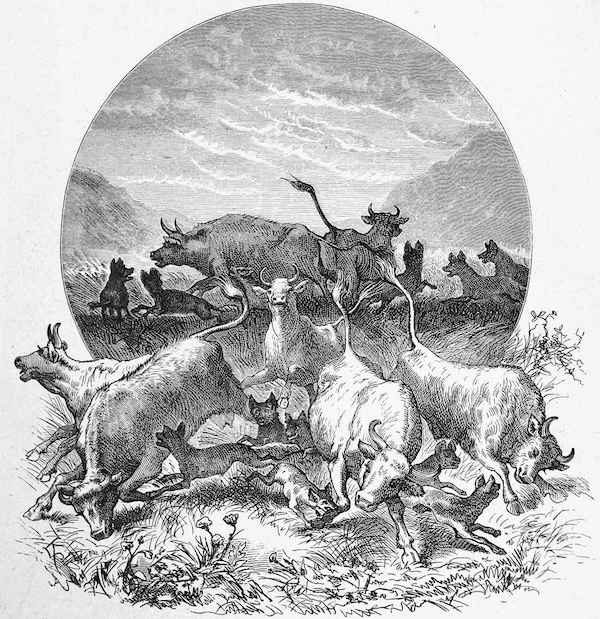
© Shutterstock
Once again, the Hebrew word for the fourth plague, arov, is ambiguous. It roughly translates to a "mixture," and over the years, rabbis had interpreted that word to mean either wild animals, hornets or mosquitoes, or even wolf-like beasts that prowl in the night, according to biblical commentary found in the Exodus Rabbah 11:3; Tanchuma, Va'eira 14. Most commonly, people interpret the text to mean wild animals such as venomous snakes or scorpions, or even lions or bears. However, according to a 1996 study published in
the journal Caduceus, which attempts to explain the plagues as epidemiological
problems caused by an initial climate disturbance, J.S. Marr and C.D. Malloy argue that the fourth plague represents a swarm of flies such as the stable fly (
Stomoxys calcitrans). Bites from these flies could have led to the boils that occurred later on in the story, according to that study.
Diseased livestock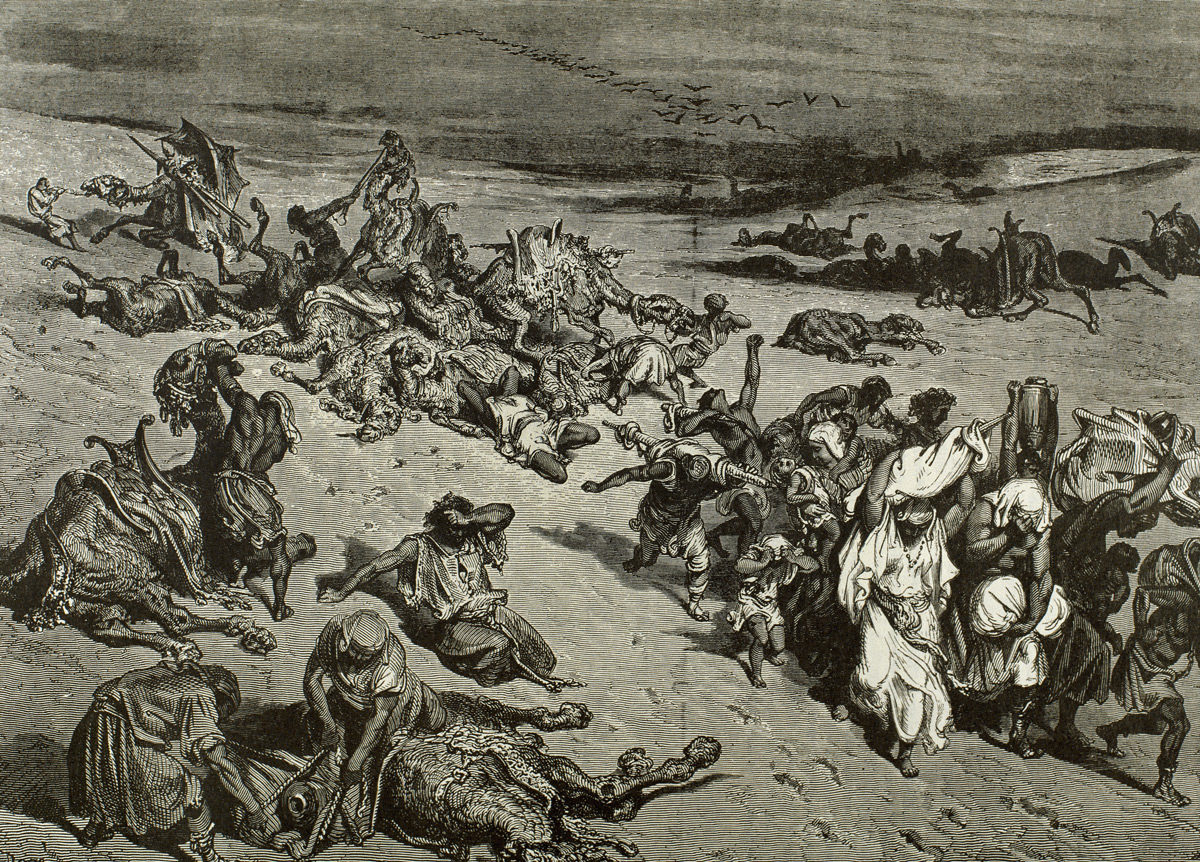
© PRISMA ARCHIVO/Alamy
The fifth plague called down on Egypt was a mysterious and highly contagious disease that swiftly killed off the Egyptians' livestock. This biblical scourge is reminiscent of a real plague known as rinderpest, an infectious and lethal viral disease that decimated populations of cattle and other ruminants across Africa and Europe from the 18th through the late 19th centuries.
Rinderpest was caused by a virus in the same family as canine distemper and measles; infected animals developed a high fever, diarrhea and ulcers in their mouths and noses, according to a
manual diagnosing rinderpest, produced by the Food and Agriculture Association of the United Nations.
The disease is thought to have originated in Asia, and traveled to Egypt 5,000 years ago along prehistoric trading routes, the
New York Times reported in 2010. Its mortality rate was exceptionally high, often exceeding 80 percent. It killed an estimated 200 million cattle in the 18th century, according to a study published in the journal
Medical History in 1997, and when rinderpest emerged in Africa in the 19th century, it killed 5.2 million cattle, causing one-third of the population of Ethiopia to die of starvation, a study published in the journal
Science reported in 2008.
Rinderpest was last diagnosed in Kenya in 2001, and was declared completely eradicated in 2010, according to the N
ew York Times.
Boils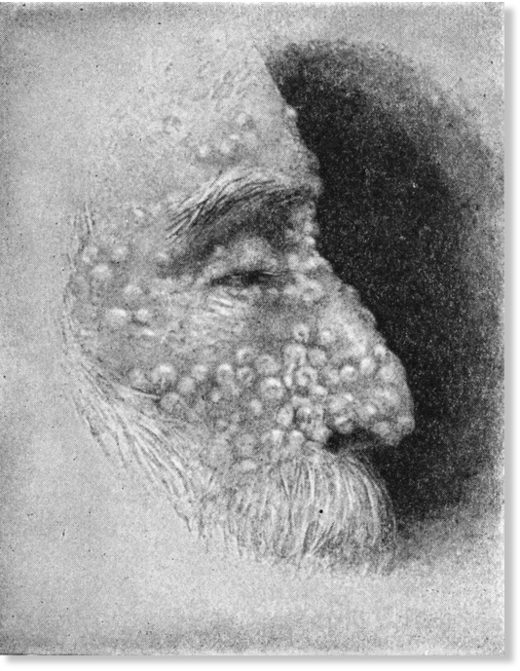
© Shutterstock
Shortly after the Egyptians' livestock died off, they were distracted by the sixth plague — an extremely uncomfortable plague of boils that covered their bodies. Boils are painful bumps usually surrounded by red, swollen skin, and are typically caused by
Staphylococcus aureus, a type of bacteria commonly found on the skin's surface, according to the
Mayo Clinic.
An outbreak of the highly infectious disease smallpox, which caused distinctive raised blisters, could result in a large number of people simultaneously coming down with rashes and welts. Smallpox is thought to have affected communities in Egypt at least 3,000 years ago, based on evidence of smallpox scars found on several mummies dating back to that period — including the mummy of Pharaoh Ramses V, according to the
Centers for Disease Control and Prevention.
Fiery hail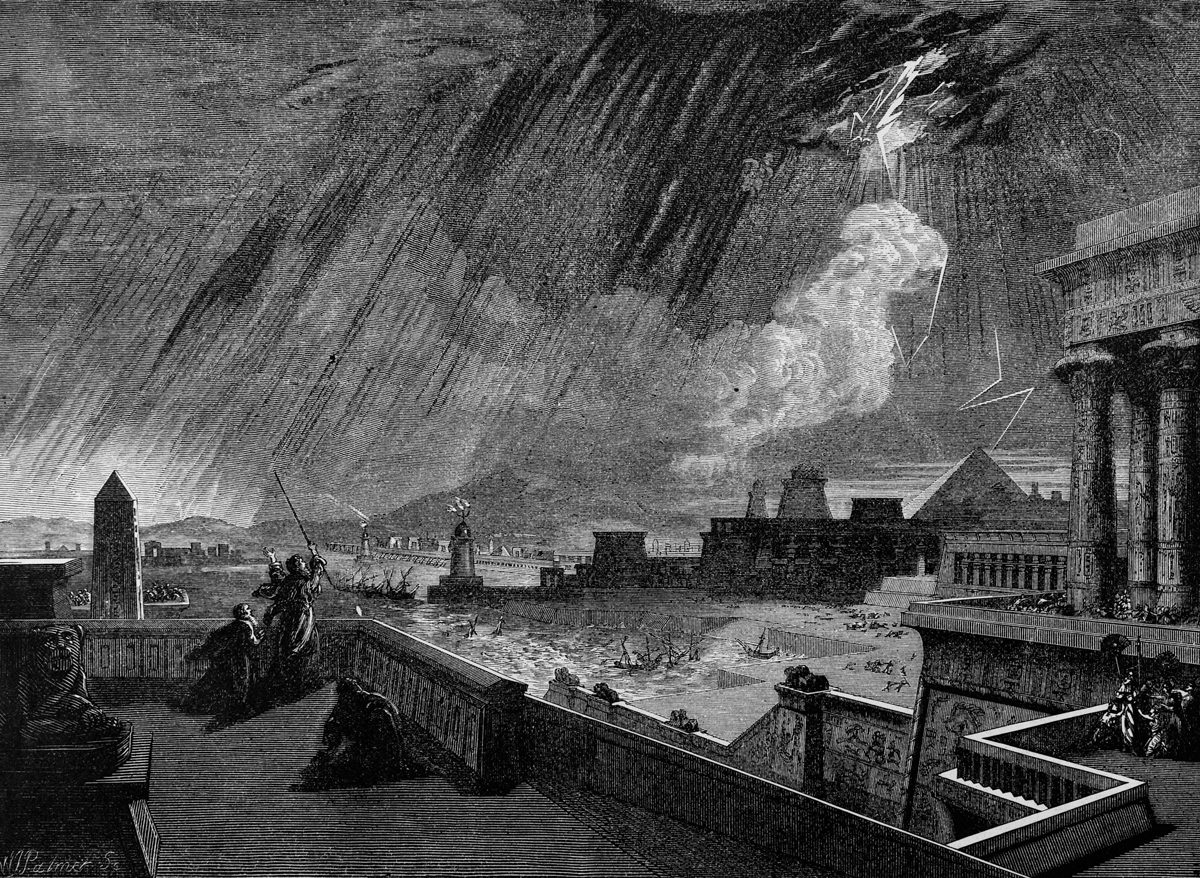
© Michael Folmer/Alamy
The seventh plague brought a heavy hail accompanied by thunder and streaming fire. The chaotic weather struck down people, livestock and trees, although the area of Goshen, where the Israelites lived, was spared, according to the book "Tanakh, A New Translation of The Holy Scriptures" (The Jewish Publication Society, 1985).
A nearby volcanic eruption about 3,500 years ago on Santorini, an island north of Crete in the Aegean Sea, may explain this plague, as well as others. It's possible that the volcanic ash mixed with thunderstorms above Egypt, leading to a dramatic hailstorm, Nadine von Blohm, from the Institute for Atmospheric Physics in Germany,
told the Telegraph.
Locusts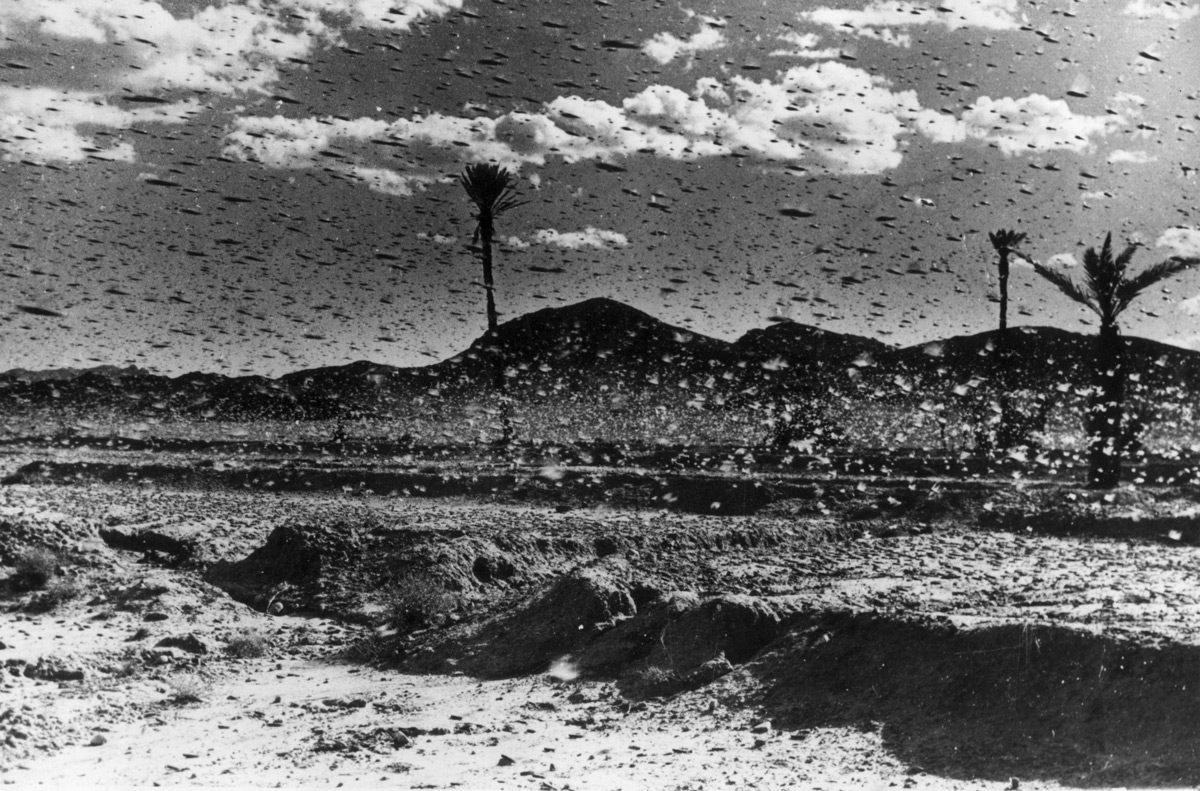
© Keystone/Getty
When the Pharaoh once again refuses to let the Jewish people go, hungry locusts descend as the eighth plague. Moses warns the Pharaoh: "They shall cover the surface of the land, so that no one will be able to see the land." Such a pestilence would devour all the remaining plants that the hail did not destroy, Moses said, according to the "Tanakh."
The volcanic eruption on Santorini may have created favorable conditions for the locusts, said Siro Trevisanato, a Canadian molecular biologist and author of "The Plagues of Egypt: Archaeology, History and Science Look at the Bible" (Gorgias Press, 2005).
"The ash fallout caused weather anomalies, which translates into higher precipitations, higher humidity," Trevisanato
told the Telegraph. "And that's exactly what fosters the presence of the locusts."
Darkness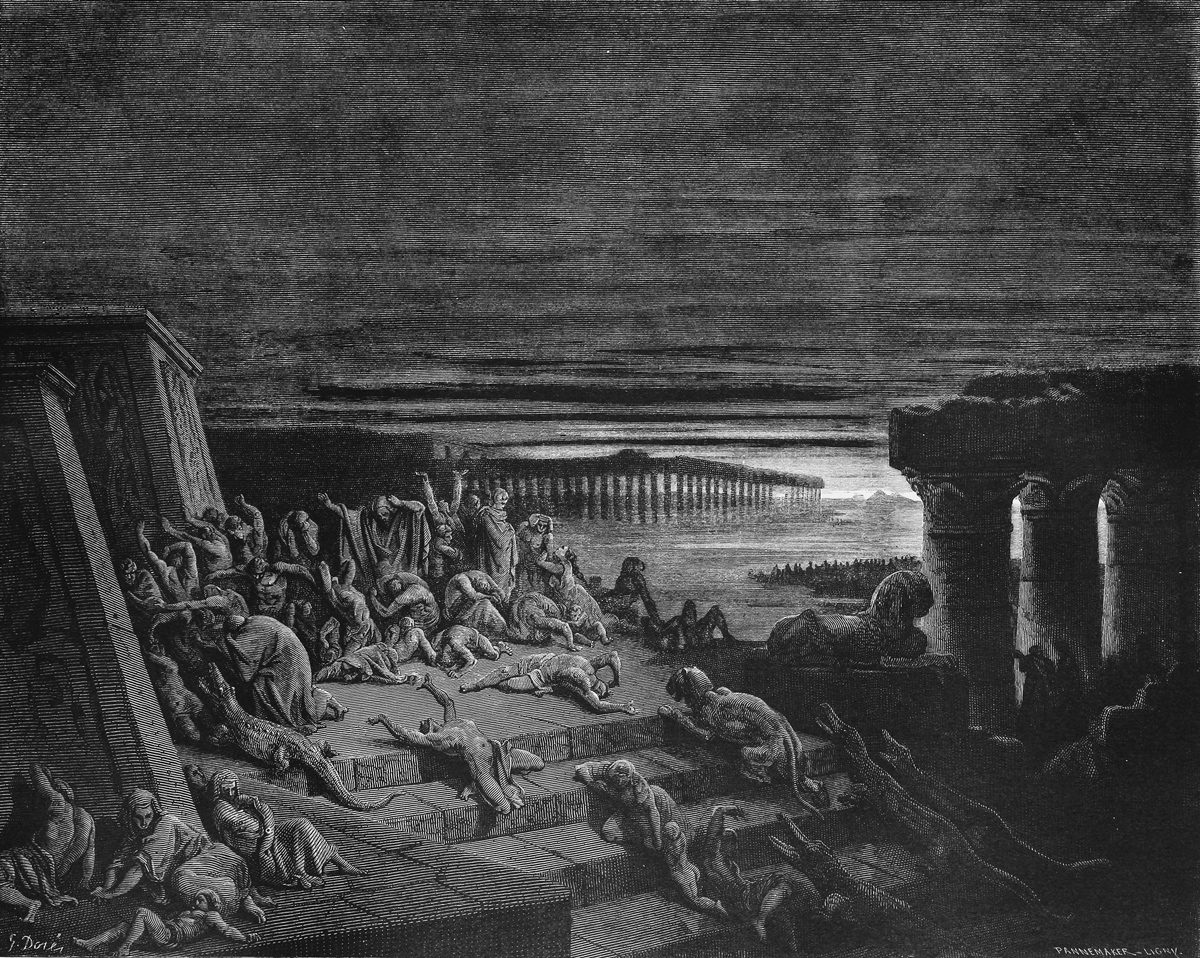
© Shutterstock
The plague of darkness may have been a solar eclipse or a cloud of volcanic ash, scholars say.
According to the Old Testament, a darkness so thick that "people could not see one another" descended on Egypt for three days. However, the "Israelites enjoyed light in their dwellings," according to the book "Tanakh, A New Translation of The Holy Scriptures" (The Jewish Publication Society, 1985).
Perhaps the darkness coincided with an eclipse on March 5, 1223 B.C. — you can
see the path here on NASA's website — according to
a study written by Iurii Mosenkis, an archaeoastronomy researcher who lives in the Ukraine. However, the fact that Israelites had light in their homes might mean "lights out" for the eclipse hypothesis, as it doesn't make scientific sense why some people, but not others could overcome the darkness.
Another idea is that a volcanic eruption about 3,500 years ago on Santorini, an island north of Crete in the Aegean Sea, spewed ash that caused the darkness,
according a to National Geographic special, as reported by the Telegraph. However, the eruption happened about 500 miles (800 kilometers) from Egypt and before the exodus event,
according to the Christian Courier.
Killing of the firstborn
© Shutterstock
In the 10th, and last plague, Moses tells the Pharaoh that all the firstborns in the land of Egypt would perish.
Perhaps, the algal bloom that turned the rivers blood red released mycotoxins, poisonous substances that can cause disease and death in humans, according to a 2003 review in the
journal Clinical Microbiology Reviews. Grain contaminated with these mycotoxins could have been deadly, and could explain the death of the firstborn children, said epidemiologist John Marr, who was the chief epidemiologist at the New York City Department of Health,
as reported by Slate.
The firstborn might have been the first to pick the grain, and thus would have fallen victim to it first as well, according to the Telegraph.
Reader Comments
R.C.